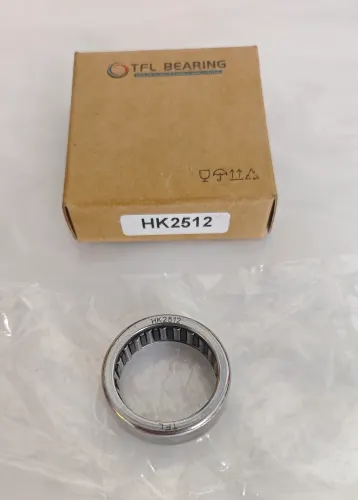Knowledge Center
First Steps with Your New Bearing: An Unboxing Guide to a Longer Life
When you receive a new, perfectly packaged bearing, you are holding a high-precision component. From the moment it leaves the clean factory, its packaging becomes its “protective shield.” How you unbox it directly affects its future performance and service life. Remember, treat a new bearing like a newborn baby—every step requires care and caution.
Section Navigation
#1 What is a Bearing?
#2 Bearing Knowledge for Beginners
#3 Operation Guide for Bearings After Arrival
Understanding Its “Protective Shield” – The Bearing’s Packaging
Proper bearing packaging is more than just a box. It is a multi-layer defense system designed to block two major enemies: moisture and dust.
- Outer Box (Cardboard): This is the first line of defense. It provides support, protection, and displays important information.
- Inner Wrapping (Plastic Bag or Anti-Rust Paper): This is the core defense line. It seals the bearing from the air, effectively blocking moisture and preventing rust.
- Anti-Rust Oil/Grease: This is its “body armor.” Bearings are coated with a special anti-rust agent at the factory. This is key to protecting them from rust during storage and transport.
The Information on the Box is Important!
Before you open it, carefully check the information on the box, especially:
- Model Number: This is the most critical piece of information. Make sure it exactly matches what you ordered. A difference of one letter or number can mean a completely different product.
- Brand: Confirm the brand to avoid counterfeit products.
The Three Golden Rules of Handling
After preparing your tools and cleaning your workspace, you can begin unboxing. Please follow these three golden rules:
Rule 1: Don’t Unwrap It Until the Last Minute
- Why? The original packaging is the cleanest place for a bearing. Once opened, it is exposed to an environment full of dust and moisture.
- The Right Way: Plan your installation process. Complete all preparations first (cleaning the shaft and housing, getting tools ready, etc.). Then, open the bearing’s inner wrapping just before you are ready to install it.
- Simple Analogy: It’s like a sterile medical swab. You would never tear open its package and leave it in the open air before you are ready to use it.
Rule 2: Keep It Clean. Absolutely Clean.
- Why? Bearings are high-precision parts. The clearance between the rolling elements and raceways is tiny. Even a small particle of dust or a metal chip can act like sandpaper inside. During high-speed operation, it will create permanent dents or scratches on the smooth raceway. This will later cause noise, vibration, or even failure.
The Right Way:- Work in a clean, dry area.
- Make sure your hands are clean, or wear clean gloves.
- Use clean, dedicated tools.
- Simple Analogy: It’s like getting a grain of sand in your eye. It’s tiny, but it causes great discomfort. For a bearing, a speck of dust is that “fatal” grain of sand.
Rule 3: Resist the Urge to Spin It
Many people have a habit of spinning a new bearing with their fingers or an air gun to hear how “smooth” it sounds. This is an extremely wrong and destructive action!
- Why?
- The anti-rust oil on the bearing is very thin. It is not a lubricant and cannot protect the surfaces during high-speed spinning. Dry spinning causes the rolling elements to grind directly against the raceway, causing microscopic scratches.
- Touching it with bare hands transfers sweat and dirt into the bearing.
- Blowing it with compressed air forces invisible dust and moisture from the air into the bearing.
- The Right Way: After taking the bearing out, install it directly. There is no need to wash it (unless specified for a special application). And never spin it. You will experience its smoothness after it is properly installed, lubricated, and running in the machine.
- Simple Analogy: This is like starting a brand-new car engine without any oil. Even revving it for a few seconds will cause permanent damage.
Respect for Precision Starts with Unboxing
Respect for a new bearing begins with how you treat its packaging. Keeping the package sealed, maintaining a clean environment, and avoiding dry spinning are simple, cost-free actions. They are the first and most critical steps to ensuring your bearing performs at its best and lasts its longest. Remember, your care at the start will be rewarded with the long-term, stable operation of your equipment.
Not finding what you need?
If you have enquiries about our product or solutionservice, please contact us via email.
